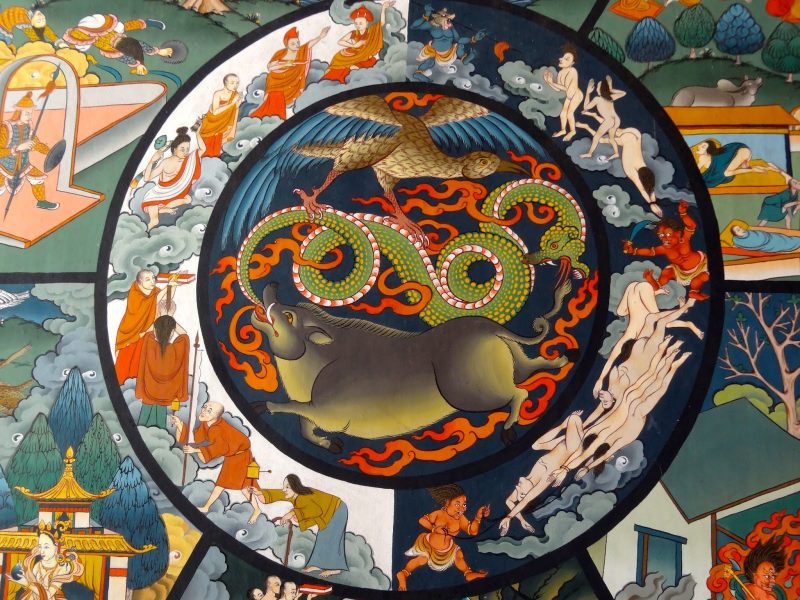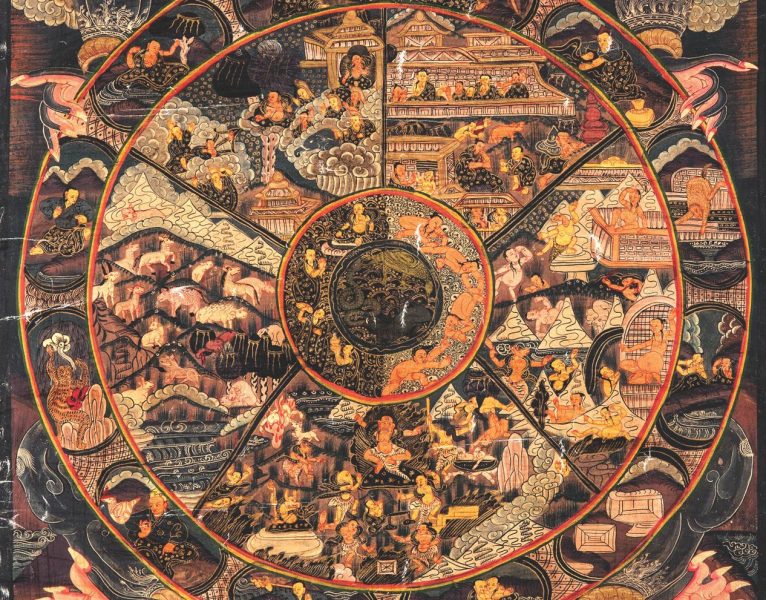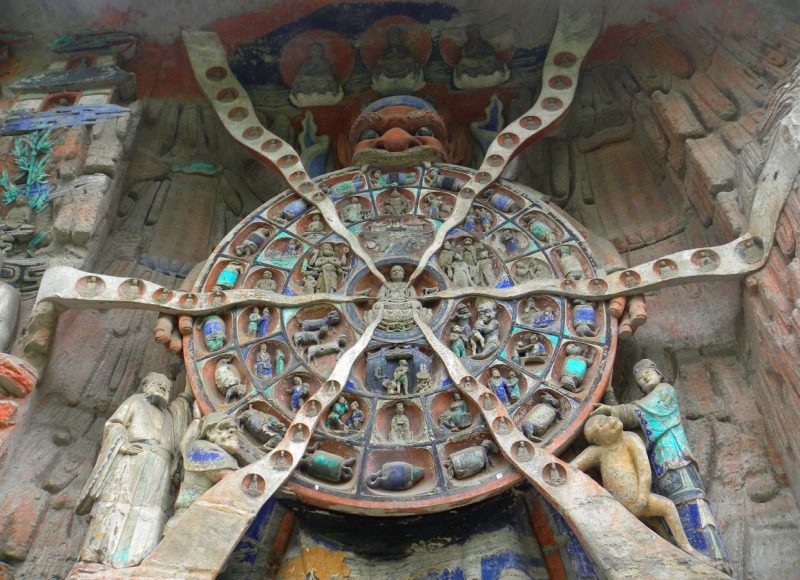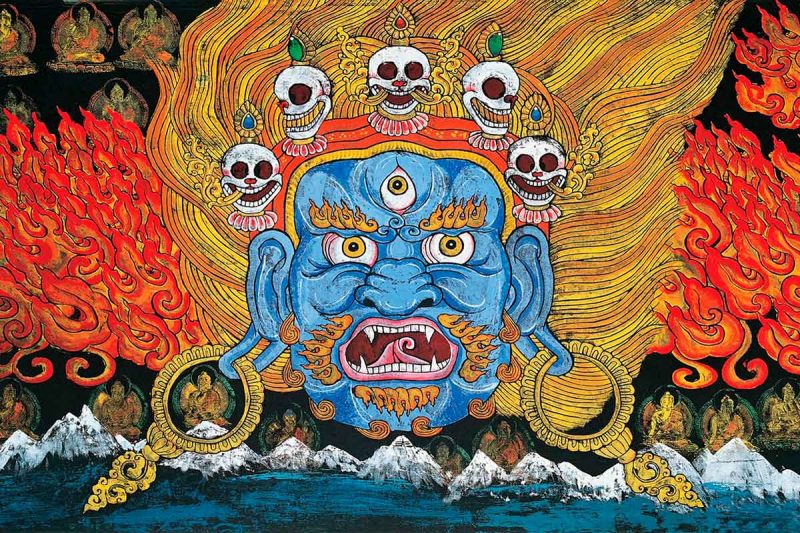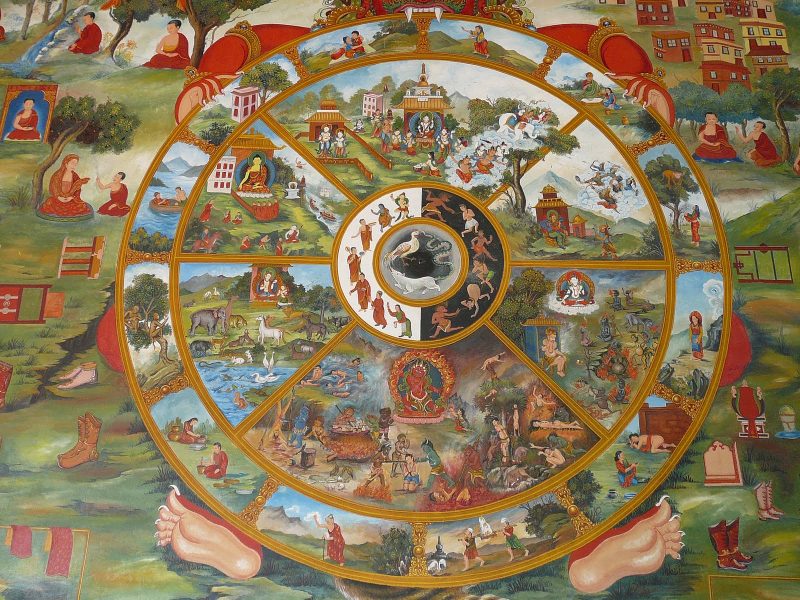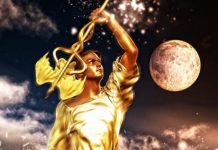Bhavachakra or the wheel of Sansara - what is it described in detail in the teachings of the Buddha. There is a great temptation to use the term for any convenient reason, having familiarized yourself with it superficially. However, one must understand that the doctrine of Samsara is based on an unconditional belief in reincarnation.
Material Content:
Historical facts
Some people claim that they can remember their past lives. The wheel of Sansara and reincarnation - these concepts are central to several eastern religious teachings (Buddhism, Hinduism, Jainism). They mean approximately the same thing: the human soul after the death of the body receives a new physical shell. There is no scientific evidence for this phenomenon, but scientists cannot deny it either. Historical facts make us believe that the cycle of birth and death really exists.
Young children between the ages of 2 and 7 sometimes tell details about their past lives. As they get older, they themselves cannot remember what they were talking about. This phenomenon was investigated in detail by Ian Stevenson. He studied the stories of 3 thousand children, documented and compared with real facts. After his research, he became convinced of the reality of reincarnation of souls and published the book “Twenty Cases of Alleged Reincarnation”.
What is the wheel of samsara
The wheel of Samsara clearly demonstrates the law of karma, which determines the rebirth of all beings again and again. It symbolizes the entire existing world, filled with suffering. The wheel depicts 6 birth options, 6 worlds of Samsara. At the bottom of the circle are three conditionally bad births, at the top are three conditionally good births. Only those souls who left the network of Samsara are saved from suffering.
The meaning of the term is concise and clear.
Sansara is a relationship of resentment, retribution, the eternal cycle of birth and death, from which it is difficult to get out. One who is seized by a whirlwind of passions, is waiting for a new rebirth and suffering in one of the worlds.
Newton’s third law states: the force of action is equal to the strength of the reaction. He can describe not only physical phenomena, but also the meaning of the wheel of Samsara. The law of retribution is expressed in Russian proverbs and sayings: what a man sows, he will reap, a sowing wind, a reaping storm, etc.
Symbolic images
The doctrine of karma is sometimes depicted as a snake swallowing its tail. But the symbol most often used is the wheel of Samsara, consisting of several circles.
Each circle of the wheel of Samsara has an important symbolic meaning:
- In the center are the root causes that captivate people into the endless cycle of karma - a pig as a symbol of ignorance, a rooster meaning lust, a snake - a carrier of anger.
- The second wheel symbol is a circle divided into 2 halves. It means good and bad karma.
- The third circle of the wheel is divided into 6 parts, it describes 3 happy and 3 adverse worlds in which the soul can be embodied.
- The outer, final circle of the wheel is divided into 12 parts or Nindan. This is a symbol of the 12 steps of the cycle through which the soul passes, moving between birth and death.
The circle of Samsara holds in his fangs and paws the demon of death - the Pit. Outside the circle, a Buddha is depicted, having reached moksha or enlightenment and left the cycle of suffering.
What does it mean "The wheel of Samsara gave a turn"
All creatures in the universe go through 12 links of development, or, as they are also called, Nindan.
These are causal links of the law of karma, forming 1 complete cycle:
- The first link in the cycle is spiritual blindness, the ignorance that precedes conception.
- Then the karma of the being leads him to embodiment in one of the worlds.
- Consciousness begins to awaken during embryogenesis.
- Sensual and figurative knowledge arises.
- The body and senses are formed according to karma.
- The perception of the world begins.
- Feelings form a personality.
- Dissatisfaction, desire are manifested.
- All efforts are aimed at achieving goals.
- Misconduct and delusion create new karma.
- Waiting for a new birth.
- Old age and death.
When an entity lives through all 12 stages, it is said that the wheel of Samsara gave a revolution. A new fate has been determined that will direct the soul to work out karma in one of the worlds. The soul that is doomed to be embodied in the body of an animal, hellish creature or preet (hungry spirit) is unhappy. The most righteous entities, deserving a life full of pleasure, will be embodied in the world of gods, those who love power in the world of asuras. Only birth in the human body is considered by Buddhists to be the most favorable for overcoming the power of Samsara.
Bardo State
The Tibetan book of the dead, Bardo Thödol describes in detail everything that happens to a person’s soul after death - where it gets, what it sees and how it should behave. This valuable information, according to the Tibetan sages, could help and guide all who have knowledge in the afterlife, especially those who died suddenly.
Sudden death is the most unfavorable in all religious traditions. It may be the result of an accident or an attack by bandits. This death is also called untimely or evil - the soul, being torn out of the familiar world, suffers a tremendous shock, it is in danger. Ancient knowledge is called to protect from dangers in the afterlife.
In Western culture, the state of the bardo is associated with the position of the soul after death and until the moment of birth in a new body. In Buddhism, this concept has a broader meaning, it literally means "between two" or an intermediate state.
The teachings of the Diamond Way refer to six bardos:
- dying - from illness to death;
- posthumous experience - the transition of the soul to its original state and striving for a new incarnation;
- birth - from conception to birth;
- life - from conception to death;
- sleep - from falling asleep to awakening;
- meditation - from immersion in meditative concentration to returning to the real world.
The state of the bardo can also be called life in anticipation of something, when time is felt as a gap between events.
Out of the cycle of suffering
“Enemies and Diseases Are the Best Teachers” is a hackneyed phrase whose recognition in real life is very difficult. But the universe is a big classroom. The development of a person depends on how well a person learns the lessons of life. If the person remains in a position of pride, thinking that no one has the right to offend her, she is kept in the cycle of suffering of Samsara.
Every person has a rejection of criticism and hatred towards him. It is natural. There is discontent and disagreement with this attitude. If you do not take this situation as your own, trying to figure out what the hatred is for, the flow of negative will intensify. There will be new enemies who will also begin to hate.
To overcome the vicious circle of mutual hatred and aggression, a person has free will. He has the right to choose what is more important for him - liberation from suffering or the triumph of justice. It is difficult for some Christians to understand the words of Christ "love your enemies, bless those who curse you, do good to those who hate you, and pray for those who offend you." Although Christian teaching rejects the possibility of reincarnation, through the concept of Samsara, God's unconditional love becomes clearer.
Buddha pointed the way how to get out of the wheel of Samsara, consisting of eight steps.
At the heart of the path is the wisdom that makes 8 manifestations of human life right:
- view;
- intention (morality);
- speech;
- behavior;
- lifestyle (spiritual discipline);
- an effort;
- Mindfulness
- concentration.
The correct view is understood as the adoption of 4 noble truths and the main provisions of Buddhist teachings.
Law of samsara
Having committed a bad deed in relation to some person, the guilty person is punished according to the just laws of the Higher Mind. That Mind, which is associated with all living relationships of love. The offended man wants his enemy to experience the same thing as himself. According to the highest law of justice, this desire begins to be fulfilled. After a certain period of time, the wish for trouble, according to the same law, returns to the one who hates his offenders. This is the law of Sansara in a language understandable to Russian people.
The law of higher justice forms the fate of all living beings in the universe. Good is rewarded, evil is punished. With guilt recognition and correction, the soul moves to a new level of existence, until it submits to a new passion or suffering.


